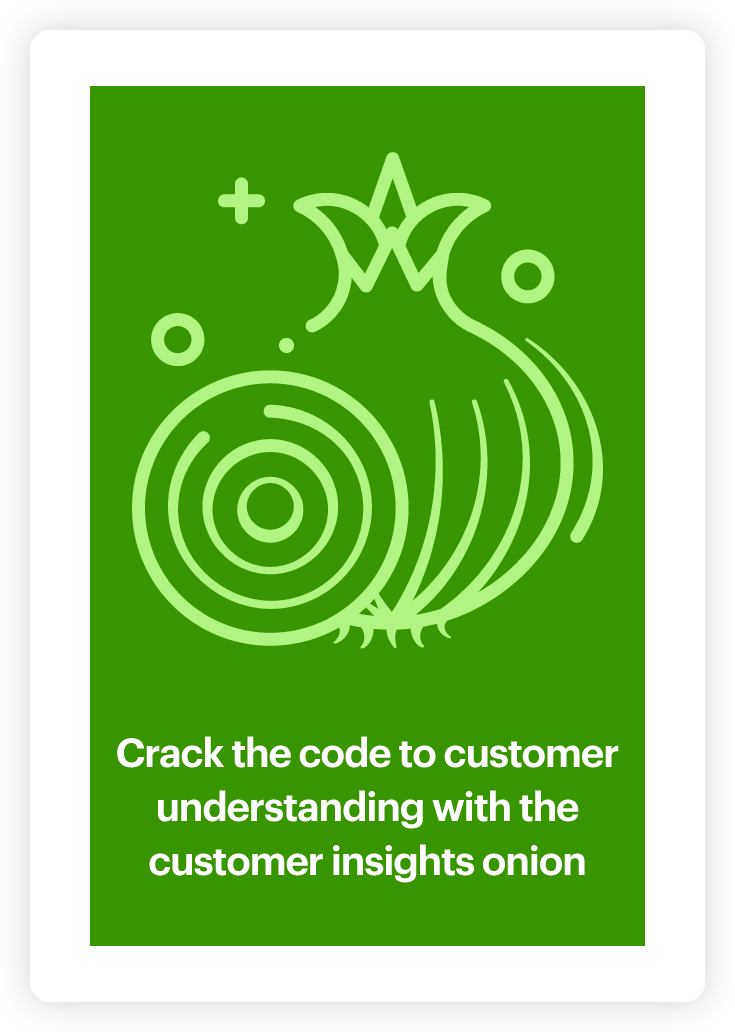Generating qualitative and quantitative consumer insights: What you’ve been getting wrong

One of the most effective and popular ways to generate customer insights is through customer feedback surveys or interviews. They allow you to ask your customers targeted questions, finding out exactly what you would like to know in order to generate valuable qualitative and quantitative consumer insights.
There’s just one big problem – most organizations aren’t asking the right customer feedback questions.
Historically, there’s been a tendency to focus surveys on closed questions that generate structured data that’s relatively easy to analyze. But closed questions in which respondents select from predetermined options only tell you half the story and rarely help you understand the reasons behind their selections. This is why a thoughtful combination of closed and open-ended questions is the most powerful way to design customer feedback surveys – you find out what is happening and why at the same time.
In this article, we discuss how you can best go about crafting and analyzing customer feedback questions to maximize their insight value.
Crafting insight-rich customer survey questions
Developing actionable consumer insights starts with generating high-quality, representative data. When crafting a customer feedback survey or interview, there are two types of customer feedback questions you can ask:
1) Structured survey questions
Structured customer feedback questions (also commonly referred to as closed questions) typically utilize yes/no, multiple choice, or rating scale formats. The data they produce is easy to analyze and helps you recognize overarching trends and distill quantitative consumer insights.
For example, you can use structured questions to determine average satisfaction ratings in different customer segments or track customer service performance over time.
Here are some examples of closed-ended survey or interview questions:
- Please rate your recent customer service interaction on a scale of 1 to 10.
- How do you feel our brand is performing in terms of diversity and inclusion?
- Positive
- Negative
- Neutral
- Would you recommend our product to a friend or family member?
- Yes
- No
2) Open-end survey questions
Open-ended (unstructured) customer feedback questions give respondents the opportunity to express their opinions and experiences in their own words. These questions generate masses of insight-rich qualitative data (words!). Although they are more difficult to analyze than their structured counterparts, open-ended questions provide you with details that you could never uncover in structured responses. This type of question can reveal the real drivers of customer (dis)satisfaction rather than just revealing if a customer is satisfied or not, providing you with powerful qualitative consumer insights.
Here are some common examples of qualitative customer feedback questions that can be paired with structured questions in the previous section to reveal why customers feel the way they do:
- How can we improve our customer service?
- What could we do better in terms of a diversity and inclusion perspective?
- Would you recommend our product to a friend or family member? Explain why (not).
Blending qualitative and quantitative consumer insights
Both structured and unstructured customer feedback questions come with their perks and downsides.
Qualitative data from unstructured questions is more detailed and allows respondents to provide reasoning for their responses, while at the same time being more difficult and time-intensive to analyze.
Structured questions require less effort from the respondent and are easy to analyze in a quantitative manner that stakeholders can understand. They also offer a great way to segment unstructured responses based on different demographic or behavioral attributes, such as satisfaction rating or respondent location. However, they generally fail to help you understand the reasons driving respondents’ opinions.
This is why customer surveys and interviews that incorporate both qualitative and quantitative questions are the most powerful and elicit the richest customer insights. They strike the all-important balance between detail and ease of analysis.
Other considerations for designing customer surveys
When designing customer feedback questions, it isn’t just important to combine closed-ended with open-ended questions.
Any customer survey or interview should be aligned with a clear business or research objective. This means that before crafting your customer feedback questions you should ask yourself what you are trying to learn about and how you plan on using the insights you generate. It’s important to consider who else in your business might be interested in learning from this feedback and to involve them in the process before launching a survey or series of interviews. The reason for this is quite simple: You can’t force insights out of data. If you take time to understand everyone’s research needs up front you can ask questions that are most likely to generate the answers you are looking for.
Also, make sure to avoid leading questions that impose pre-determined hypotheses or bias. A leading question might be: “How much did you enjoy your customer service interaction?” – it presumes that the customer enjoyed their experience.
Customer insights analytics for unstructured data
Now that you know how to craft the ideal mix of structured and unstructured customer feedback questions, you’re probably wondering how to best go about analyzing your responses.
Manually reading through open-ended responses and coding topics is not an effective use of time. Plus, manual human analysis runs the danger of injecting hypothesis-driven bias or error into your insights. Customer insights tools present a helpful solution to this dilemma by automating the analysis of unstructured feedback, providing simple, objective, and accurate insights.
Tools like Relative Insight extract meaningful consumer insights from written data sources in minutes instead of hours or days. All you have to do is collect your customer feedback data and upload it to the platform. Our technology does the hard work of efficiently detecting the topics, words, phrases, grammar, and emotions used by an audience as well as how conversations differ across segments or over time. By helping you generate quantitative consumer insights from qualitative data, you can easily incorporate qual data sources into your insights process and confidently report your findings to stakeholders.
Spending less time on the actual data analysis process means that you will have more time to craft a narrative and build action plans off of your insights. Common applications of this type of consumer insights research include adapting marketing communications to reflect the language used by consumers, product development improvements, tweaks to customer service strategy and more.
Relative Insight helps insight teams turn messy customer feedback into quantitative consumer insights that resonate with stakeholders. Download our introductory guide to customer insights or book a no-commitment discovery call to find out how.
